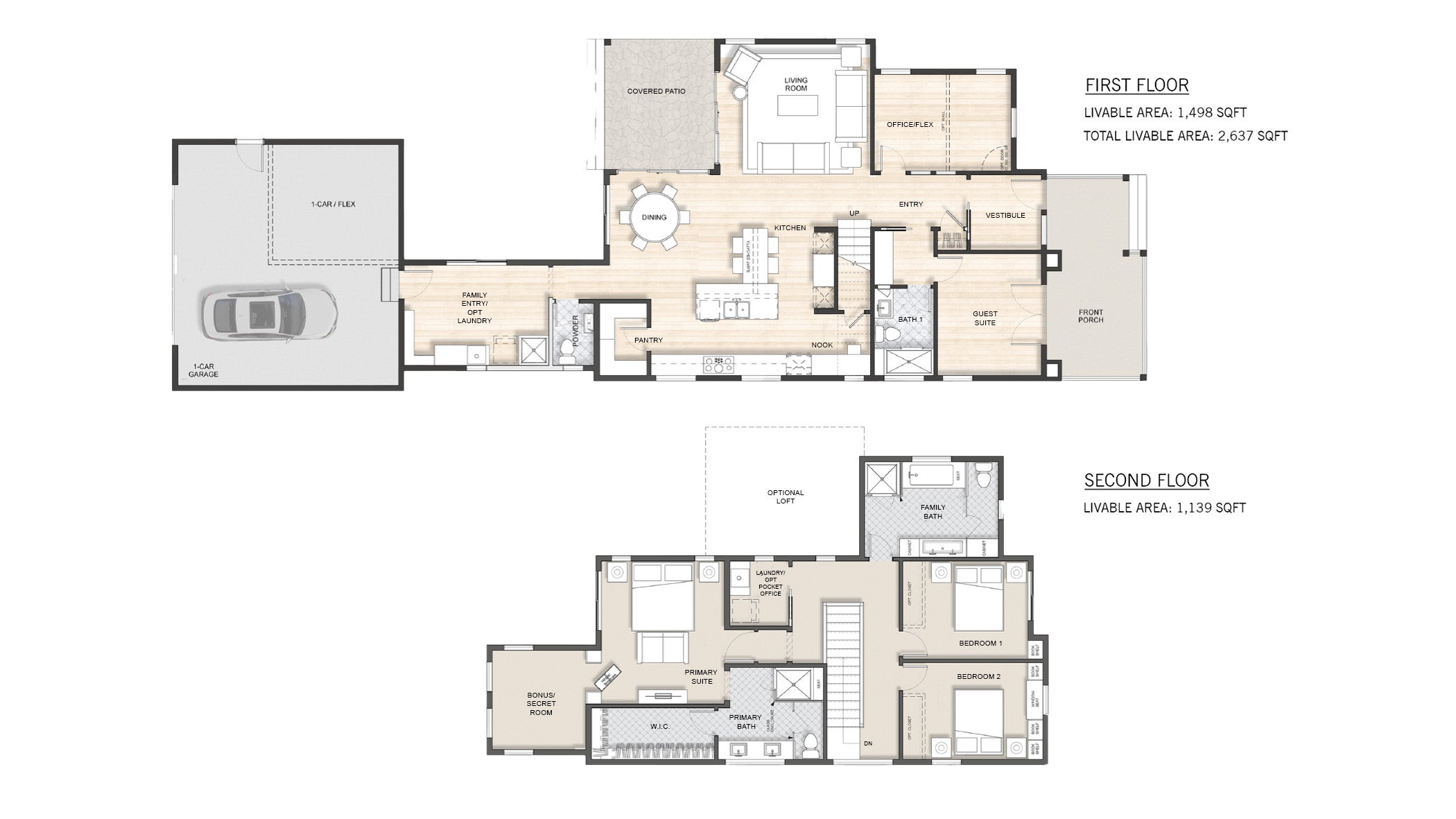It goes with out saying that the pandemic transformed a good deal about the way we all are living our life. The capacity (and in some cases, necessity) of attending perform and university from property, coupled with constraints on what we could do out in community, meant that our homes had to do a lot more for us than ever. As owners reprioritized their spaces, builders and architects have wanted to modify the way households are intended.
New-construction homebuyers want extra area
The biggest improve is the footprint of new-develop households. “Buyers want additional sq. footage,” states Rose Quint, assistant vice president for study study at the Countrywide Affiliation of Household Builders (NAHB).
Quint clarifies that the normal dimensions of freshly manufactured houses tends to be cyclical. It experienced been trending downward due to the fact it last peaked at close to 2,700 square feet in 2015. In 2020, on the other hand, that development started to reverse. After sinking to all-around 2,450 sq. ft, new property sizes are climbing once more and averaged 2,561 sq. ft in the 1st quarter of 2022.
Architects are placing new great importance on entryways
A desire for extra area is not the only residence style and design development that is emerged since the pandemic, according to Donald Ruthroff, principal at Dahlin Team Architecture in California. “People are on the lookout for their house to be a safe house, to be far more purposeful than it was,” Ruthroff states.
That improved operation commences proper at the front doorway: The pandemic led to a resurgence in the attractiveness of foyers and vestibules at the key entryway.
Home owners had been searching for a way to individual shipping and delivery workers and other momentary readers from the primary residing region, and a independent place at the principal entrance was the respond to. In point, Ruthroff states, vestibules initial became popular architectural features during the Spanish flu pandemic a century in the past.
Secondary entrances, like a back again-door mudroom a lot more frequently applied by the family, observed a makeover, too. In unique, the so-called fall zone where by sneakers, coats and bags generally get dumped experienced to morph in reaction to property owner requires.
“We’re looking at that area get larger mainly because it has to do extra,” Ruthroff stated. “People want to come into the dwelling and be able to clean their fingers and fall their function dresses, particularly if they’re a frontline employee.”

Dahlin Team Architecture manufactured this idealized flooring system dependent on survey responses about dwelling format tastes throughout the pandemic.
DAHLIN Group ARCHITECTURE
Adaptability is now an interior design craze
Additional within the residence, people also seemed to make the current place do additional.
“We truly chat about style transforming in terms of the dwelling not acquiring bigger, but hunting at just about every square inch of the home and creating absolutely sure it’s working to its most efficient,” Ruthroff says.
From glass doors that develop an workplace space out of a nook in the living space to home furnishings options that support spaces functionality better, ground breaking methods of all sorts have gained increased desire about the final couple decades.
“Our president talks about the Swiss Military Knife kitchen,” Ruthroff delivers as an illustration. “Kitchens don’t want to be more substantial, necessarily, but they need to do more. It is about a lot more comprehensive kitchen area cabinetry that has far more effective storage.”
Did the pandemic get rid of the open up floor strategy in new residences?
Even as men and women need to have their house to do additional, the open up floor program continues to be preferred with owners and prospective buyers.
Quint suggests that in a new NAHB survey, about 34 % of remodelers claimed performing on tasks aimed at generating floor plans a lot more open up. Only 2 per cent claimed they experienced work that designed additional isolated areas.
Ruthroff agrees. “The open flooring strategy is not going absent,” he claims. “But we are making alternatives for spaces adjacent that are connected, but not entirely related.”
1 futuristic alternative which is just starting off to get consideration, he adds, is movable walls. “We’re seeing some arrival of adaptable wall units that will offer the means to wall off or modify the ground strategy,” he states. “That’s however a handful of yrs off in its authentic application, but I consider which is coming.”
Architects and builders are also getting much more intentional about developing spaces at the ideal scale. “Some of the spaces we were building around 2010 were being extremely huge,” Ruthroff says. “We sometimes refer to it as twirling house, just house for space’s sake. But it comes down to: You can not sit quite significantly from the television in advance of it turns into not comfortable.”
New homes emphasize indoor/outdoor living
House owners started to area greater benefit on outdoor living area in the course of the pandemic, far too. Patios, decks and porches have been common additions over the final handful of yrs, according to Quint.
Ruthroff claims that far more people now want outdoor areas that truly feel like a purely natural extension of their within rooms. This incorporates applying complementary resources each within and out, and making clear sightlines to the outdoor.
“It’s the thought of producing sure people today really feel related in a holistic way, that contributes to physical wellness and wellbeing,” he says. “The amount of money of all-natural light-weight you get in the property is vital to retaining people today wholesome.”
Base line
The pandemic has altered what persons need and want in a home, and builders and architects are responding with new, far more adaptable flooring strategies. From more outside room to amplified flexibility inside, household design and style is shifting to fulfill the requires of the minute.
